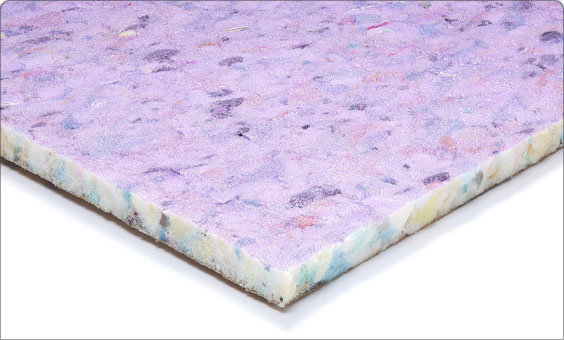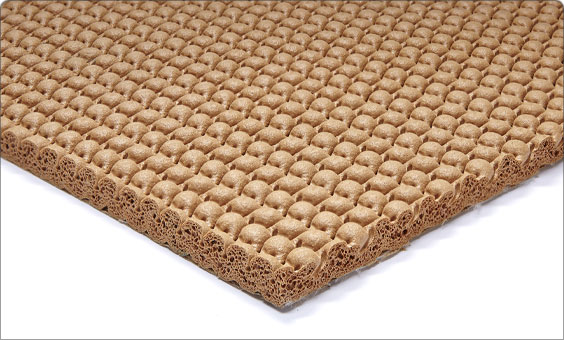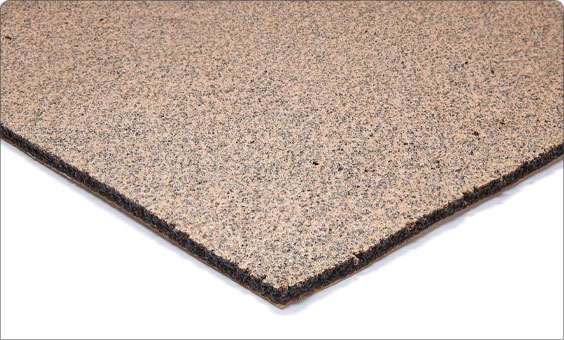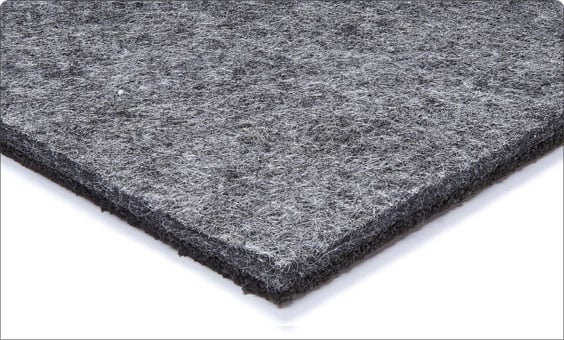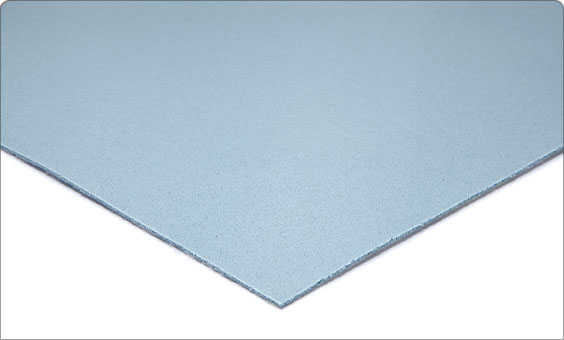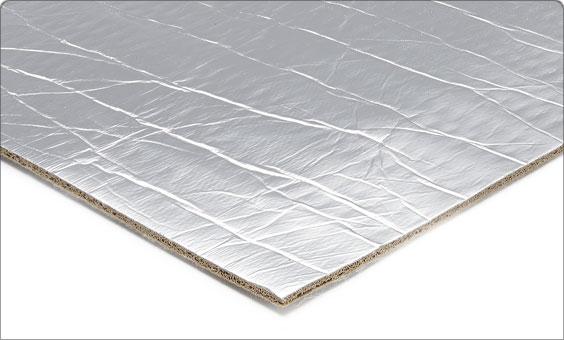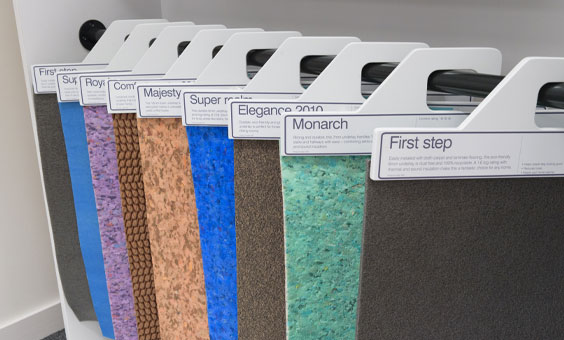Underlay buying guide
Choosing new flooring for your home is always exciting. There are so many colours and materials to choose from, from carpets to vinyl, and it can be easy to put all your focus into that. But there is another part of laying down a carpet that can be easily overlooked, and that’s the underlay. You want to feel comfortable as you walk across that new floor, and without the right underlay for the job that isn’t going to happen. So, how do we find which option is best?
There are a few steps to consider in choosing an option. Different areas of the home may benefit from different underlays, and different flooring choices can also influence which to pick. Understanding the options and why you need it, however, is a great place to start. In this underlay guide, we’ll go over these key points so you can choose the best underlay material for your project.
Why get underlay?
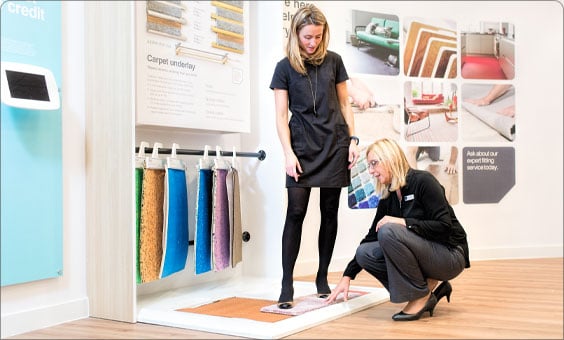
Underlay is the foundation for your flooring. While it is invisible after fitting, its effects are huge. Good underlay can improve everything from how flooring feels underfoot, to how it wears and maintains its looks over time. In fact, investing in your underlay can increase the lifespan of your flooring by 30-50%.
Of course, there are other benefits too. Underlay can also help reduce your energy bills as it traps heat under your floor, insulating the room and keeping it warm. This insulation doesn’t just stop at heat though; underlay also helps to insulate against sound, keeping in-room noise to a minimum. This is great if you live in a noisy house or in a flat.
In short, underlay:
- Adds a cushioned depth of comfort underfoot
- Acts like a shock absorber, protecting the condition of your floor
- Acts as a barrier against noise and helps with soundproofing
- Acts as an insulator and could save you money on your energy bills
Carpet underlay versus hard floor underlay – What’s the difference?
You could be forgiven for thinking that underlay is underlay, and any will work for any part of the home and below any material. This isn’t quite the case, however. As a rule, carpet underlay needs to be soft and comfortable to walk across to help cushion your steps, whereas hardwood flooring underlay, such as for wood floor underlay, tends to serve as a moisture barrier. Some flooring materials, like vinyl, may not even need underlay at all. If you want further information, why not reach out to our customer support? They’ll be happy to walk you through the different kinds for different floorings.
Types of carpet underlay
Choosing the right carpet underlay for your project is very important. The right material can increase comfort underfoot, and help improve the lifespan of your carpet by up to 50%. We have a great range of underlays you can browse through to get an initial look. Still, making the choice on which to use can be tricky, especially when you’re trying to figure out how much underlay is and how much you will need for your project, so we’ve laid out the four most popular types of carpet underlay for you to take a look at.
Polyurethane
Most of the underlay sold used to be made from rubber. This has been overtaken by polyurethane, usually called “PU”. It’s made from offcuts or from foam that’s been recycled, making it a greener option for many. What’s great about PU is that it comes in different thicknesses and densities to suit all floors and budgets, making it viable for every flooring job. One good example of this type is the Primary Carpet Underlay, as with its low cost and flexibility it makes a great all-rounder.
Rubber Sponge
Rubber sponge underlay is still a popular choice, but nowadays this underlay is made from synthetic rather than natural rubber. That doesn’t mean that it has lost any quality though. Options like the Satisfaction Carpet Underlay, which comes in a 9mm thickness, can give a really luxurious and comfortable feel to your carpet flooring. Available in various thicknesses, this underlay is great for use all around the home.
Crumb Rubber
Crumb rubber is the kind of carpet underlay that works best for high-traffic areas. It is dense, durable, and ideal for use in hallways, staircases and landings. It has a green aspect to it too – one car tyre is present in every square metre of this material, making it hard-wearing and rugged. You can usually find this type of underlay between 6mm to 9mm thick, such as with the Patron Carpet Underlay at 6.5mm.
Felt/Crumb Rubber Combination
Felt/crumb rubber underlay combines the comfort of felt with the resilience of crumb rubber with every square metre of rubber containing at least one car tyre, much like the pure crumb rubber underlay it builds on. This combination of materials makes it excellent for both sound and heat insulation around the home, and examples like the Excellence Carpet Underlay are perfect for use in all rooms around the home.
Types of hard floor underlay
Hard floors need a different kind of underlay from carpets. Laminate floor underlay, for instance, needs to help prevent moisture and protect the joints of the floor from warping and flexing. We stock a great variety of options for all different situations, but learning more about how each can help you can help narrow down your search time considerably! To help, we’ve compiled the most common types below.
Luxury Vinyl Tile Underlay
While vinyl can be laid down without underlay, using this specific type can help improve wear and tear. Options like the LVT Power Underlay not only help protect your investment, but thanks to a high tog rating can also be used with an underfloor heating system, ideal for those cold winter months.
Stepshield
Stepshield works for your home in a few key ways. For one, Stepshield underlay is a great moisture barrier. Secondly, it helps cover minor sub-floor irregularities, helping to save time and money on installation. Finally, this underlay for laminate flooring also provides some sound dampening helping to keep things quiet around the house.
Timbershield
When it comes to wooden floors, Timbershield is often the first port of call for underlay options. Made of a highly dense and heavy-duty synthetic rubber paired with a fleece backing, this laminate flooring underlay helps provide great support to reduce flexing, even under heavy furniture.
Other things to consider
Now you have a better idea of what each underlay type is, you'll want to proceed with finding the ideal flooring underlay for your home. Keeping in mind things like how long does underlay last, how much it costs, and if it will work with the carpet you’re looking at, can take a little time. But with patience, the results will very much be worth it. With that said, let’s look into three areas to think about before making a purchase.
Understanding Tog Ratings
You may have heard of tog ratings before, perhaps when looking at mattresses and similar items for your home. But how does it apply to underlay? Thickness, density and composition dictate the tog rating of a carpet or underlay, much like they do for a mattress. A lower rating will let more heat escape, which is good if you have an underfloor heating system, as it allows the heat to rise and warm the rest of your room. If you have more conventional heating in your home, however, a higher tog rating should be one of the factors in your research as it can help insulate your home and resultingly help reduce energy consumption.
Testing Out Looks And Samples
It can be really difficult to imagine how flooring, and the underlay beneath, may look in a space before it is installed. And, thanks to the costs, it isn’t exactly something many want to go ahead with before they’re 100% certain it is what you want. While flooring options like carpets can be imagined into spaces with the Carpetright visualiser, the underlay is a different matter. That is why it may be worth getting some free samples to compare any underlay options before making a final decision. You can do this in most of our stores, or even order these online to take home and compare to what you already have installed in your home.
DIY Or Get Professional Help
Getting your flooring fitted for your home can be a long process, and if it is not done correctly it can cause faster wear and tear, both on the carpet itself and on your underlay materials. When you consider the cost of underlay, on top of the costs of other materials for the job, it may be worth paying to get this installed and done properly from the start. As professionals, installing underlay is something we offer through the fitting arrangement service as a part of the flooring installation process, and having that expertise can make or break a project like this in your home. If you do plan on fitting your underlay and carpet yourself, then check out our guide for how to lay underlay for key tips and tricks involved with the process.
Overall, if you’re looking for durable and comfortable underlay for your home then there are plenty of options for you to consider. Choosing the right one for your flooring is key to ensuring that both last you for a long time.
Want some help getting started? Why not book a free appointment with us to see what we can do for you.
